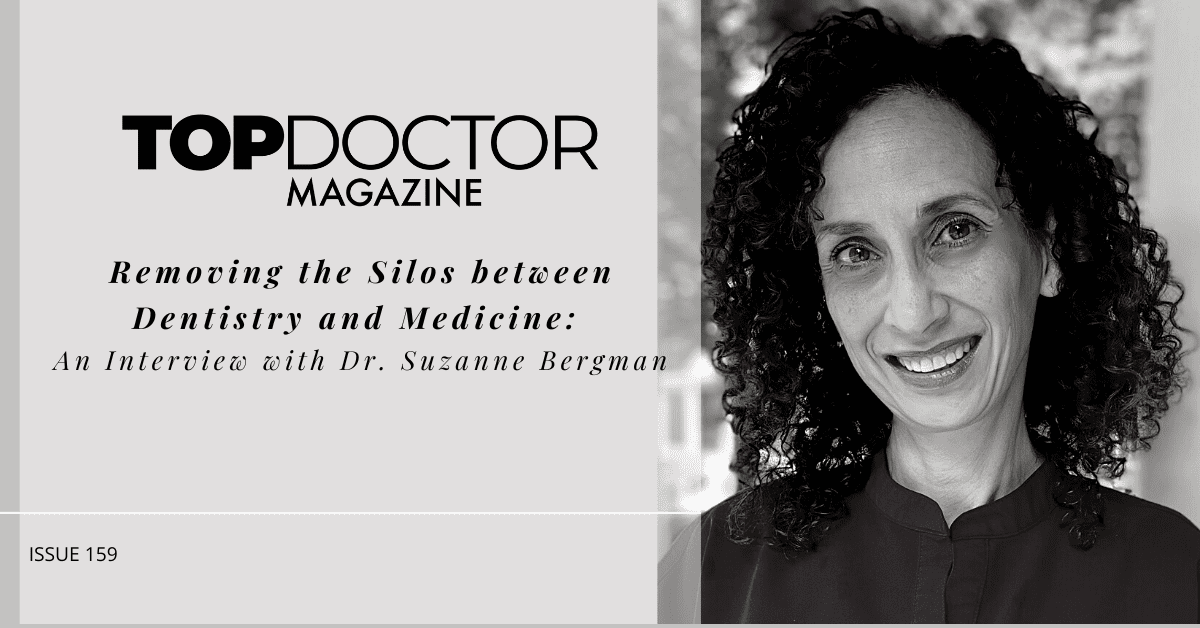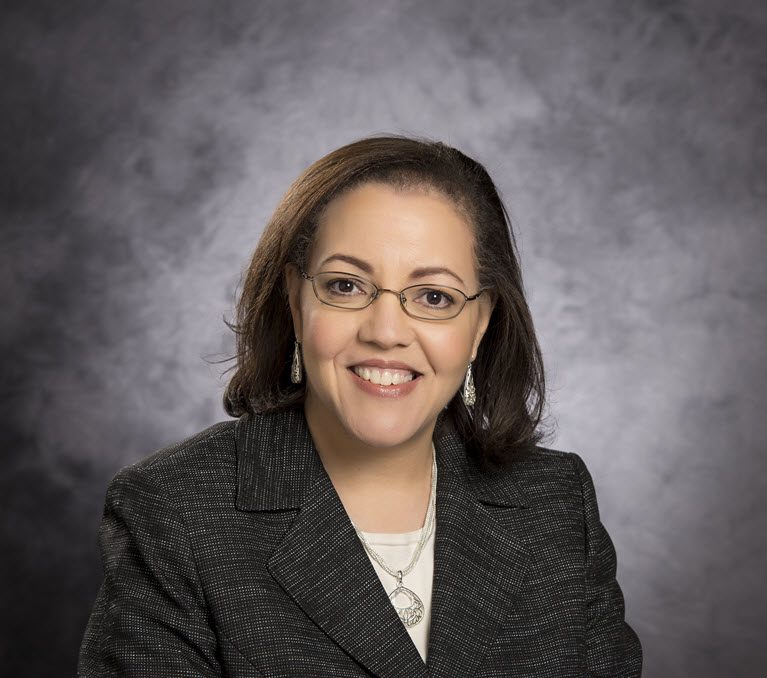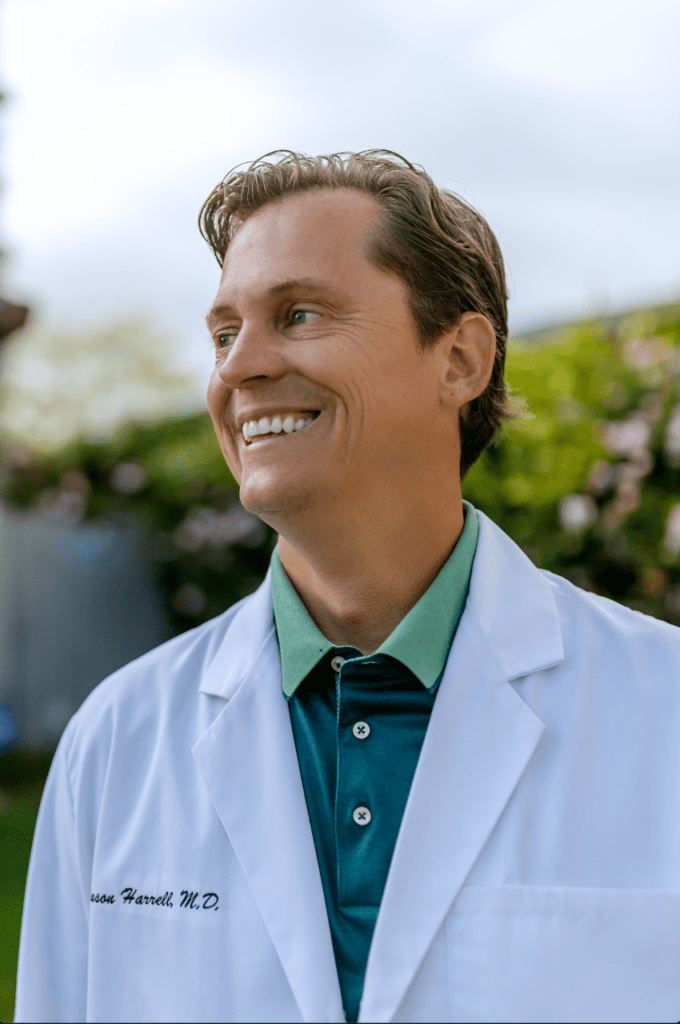The field of medicine has evolved into an abundance of seemingly endless branches on the same medical tree. But somehow, dentistry evolved as a separate field on a different tree. We know that the mouth is part of the same body as the lungs, heart, arms and legs, but dentistry has been considered a separate field for so long that we rarely question that separation.
We are conditioned to think of dental care as if there were a barrier between health issues in the mouth and those of the rest of the body. But both are served by the same bloodstream and the same nervous system. Both are subjected to the same stresses, allergies and infections. Just as with all body systems, oral health affects the rest of the body and vice versa.
In the past decade, however, the medical and dental fields have begun to acknowledge the connections between their fields, and practitioners are taking a more holistic, integrative approach to health care.
Dr. Suzanne Bergman, DDS, plays a significant role in this new way of thinking and practicing. She is at the forefront of bringing both worlds and the world of mental health together.
“I have a framed quote which says that natural law did not divide humans into three parts, medical, dental and psychological. If society chose this division for the purpose of healthcare delivery, then each professional group bears a special responsibility to be sufficiently informed about the others so that integrated total healthcare is an achievable goal,” she said.
How Did That Separation Happen?
It began with the education system. In the 1840s, people began thinking of dentistry as a different entity when the world’s first dental school opened in Baltimore, Maryland. Then, the insurance industry began treating the field as a different discipline. Later, the medical industry was strongly opposed to including dentistry in comprehensive health care. Medical doctors had begun viewing dentistry as a separate field.
Differences in the goals of medical and dental insurance helped maintain the separation. Medical insurance covered significant, less routine expenses, while dental insurance focused more on routine, preventive care.
There was no incentive for dentists and physicians to compare notes and perhaps find some commonalities that would lead to better treatment plans. Medical was medical, and dental was dental.
The Mouth-Body Connection
According to one study, people with significant gum disease are 40% more likely to have another chronic medical disorder. Diabetes and periodontitis are known to be connected — inflammation in the mouth interferes with the body’s ability to use insulin.
Periodontitis also increases the risk of heart disease. Studies suggest that 91% of people with heart disease also have dental disease. Researchers are also studying the connections between dental disease, rheumatoid arthritis, lung disease and obesity.
“Numerous patients with temporomandibular joint disorders have some form of arthritis. The first place in their body that arthritis might show up is in the jaw joint. If dentists do not recognize the need for a rheumatology referral, the patient is not receiving total healthcare.” Dr. Bergman explained.
She pointed out that patients deserve an integrated approach to healthcare, and that dentists are orthopedists of the masticatory system, not simply “tooth doctors”.
“A patient with a complex TM joint disorder requires support from dental, medical and ancillary care providers, such as physical therapists and behavioral health therapists. They must be treated for the source of pain rather than the site of pain,” she said.
An Integrative, Holistic Approach
“Our approach is the biopsychosocial model,” Dr. Bergman explained. “It is what’s accepted now as an interdisciplinary model that looks at the interconnection between biological, psychological and socio-environmental factors.”
Following in the footsteps of a long line of doctors in her family, Dr. Bergman detoured into dentistry. She focused on temporomandibular joint disorders, motivated by her own experience with it after a motor vehicle accident that resulted in degenerative joint disease.
“My practice started to become more interdisciplinary. I see a lot of patients with multiple chronic pain conditions, and I’m getting more involved with orofacial pain. It’s become a passion for me,” she explained.
Because of her own injury, Dr. Bergman understands how frustrating it is for patients to see multiple providers separately.
“I thought if I could bring these patients and providers together for a few hours in one clinic, instead of having them visit multiple clinics on seperate days, I could remove some barriers for them,” she shared.
Clinics and Classes
Teaching
Dr. Bergman has chosen education as her contribution to this integrated approach to healthcare.
“My goal is to teach dental and medical students — while they’re still in training — how to look at the whole person, instead of just focusing on one specific area,” she explained.
Dr. Bergman is also a tenured instructor for Progressive Orthodontic Seminars and the McGann Postgraduate School of Dentistry, sister companies that provide continuing education for practicing dentists. Her work includes such webinars as Orthodontic Considerations for the TMD Patient, which can be found on YouTube.
Progressive Ortho and McGann Postgrad offer a cloud dental platform, SmileStream, which provides diagnostic tools and software for treatment plans, courses, patient records,a resource library and space to share information with other dentists.
A New Clinic
“I’m opening a new clinic with some colleagues, called Integrative Therapeutics_mdb, which stands for Medical, Dental and Behavioral. We will have a nurse practitioner, physical therapist, myofunctional therapist and behavioral therapist. The patients will also have access to nutritional counseling and mindfulness/movement therapy. We look at the patient from all angles,” Dr. Bergman shared.
This clinic will eventually be a teaching facility where residents come to do rotations while still in training.
“We can teach them a more integrated approach to medicine and dentistry so that we’re not taking the mouth outside of the body,” she explained.
A New Era of Patient Care
The integration of medical and dental care will benefit millions of patients. Dr. Suzanne Bergman can be considered one of the pioneers.
“When I spend time with my patients, I always try to let them know that my goal is to give them hope. We may not have a cure, but we can try to reduce their pain experience. We will do everything we can for them and won’t just say ‘this isn’t my field’ and send them on their way,” she concluded.
Treating the whole person produces wholesome solutions!







0 Comments